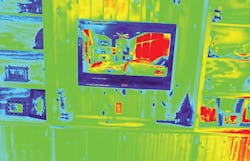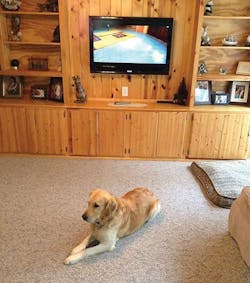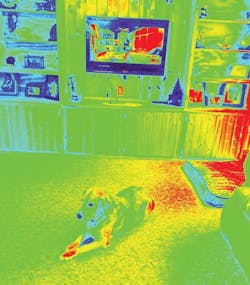Motion detectors are used for applications such as detecting intruders and setting off an alarm or sensing occupants in a space and turning on lights. If you have ever installed one of these devices, you probably have been asked to explain how they work. When asked this question, many electrical workers simply respond by saying that they detect motion when someone walks in the path of the device. This may serve as a simple explanation; technically, however, it doesn’t accurately describe the technology behind these devices.
Why is it so important to understand how these devices truly function? For starters, passive infrared (PIR) devices are one of the leading causes of false alarms in the intrusion detection industry. In fact, one could argue that most of the false alarms are caused because the installer didn’t have the technical knowledge of how the device functions. In many instances, the installer places the detector in a location that would be susceptible to false activation. In other instances, the device installed may be too sensitive for the location of installation. For other installations, such as occupancy sensors, lack of understanding of device operation may also cause the lights to turn on when occupancy isn’t present or simply not turn the lights on at all. Ultimately, a device that doesn’t function as intended will require a service call, which, in turn, will cost the contractor time and money. Even worse, it will likely create a customer that is less than satisfied with the installation.
Motion detectors are built around ultrasonic technologies, microwave technologies, PIR technologies, or a combination of these. In addition, PIR detectors can use a mirror optic technology or a Fresnel lens technology. For the purpose of this explanation, we will discuss the most common motion detector technology in use today — PIR with a Fresnel lens.
All objects, including humans and pets, emit energy in the form of heat (infrared/thermal energy). This energy is not visible to the human eye; however, it can be detected with specialized sensors. The passive in PIR means that the detector does not emit any type of energy, but it does monitor the infrared energy within the field of view of the detector.
PIR motion detectors may have sensitivity controls, but they do not have range controls. The range of a PIR is determined by the lens (Fresnel lens). The Fresnel lens is manufactured in a variety of configurations to accommodate various applications (curtain applications, corridor or long-range applications, pet alley applications, etc.). The most common application is the 180° lens, which is likely the lens that is shipped with each unit. The Fresnel lens motion sensor captures fingers of infrared (IR) energy (field of view) from specific areas. This energy is transmitted to a pyroelectric sensor mounted on the detector circuit board. In order for the detector to trigger an alarm condition or send a signal to turn on a light, the detector must recognize a rapid change in IR energy. In simple terms, this means a rapid change in temperature across one or more detection beams (depending on sensitivity). It should be noted that the pyroelectric sensor allows for slow changes in infrared energy and will not trigger a signal for slow changes in room temperature.
Now that we’ve discussed the technical aspect of the operation, let’s discuss how you can actually simulate what these devices see. In today’s world, we have tools at our disposal that were not available in years past. A simple thermal camera app on a smart phone or tablet can shed a lot of light on this explanation because a thermal image camera also works in the IR spectrum. Keep in mind though that these apps only simulate what a thermal camera sees and do not truly reflect what a high-priced camera would see. It does, however, give a representation that can be used to explain how these devices work.
First, let’s look at a normal camera view of a dog lying on the floor (Photo 1). This picture represents a long-haired dog that has been in the house for a long period of time. The room has a sliding glass door that allows ample light to come into the room. Now let’s examine what the thermal camera view looks like (Photo 2). The four colors in the image represent what an IR detector sees in its field of view. If you focus on the background (the cabinets), the sensor beams would be focused on the energy emitted from the wood. As someone or something passes in front of the cabinet, the IR energy within the field of view would rapidly change, causing the detector to trigger a signal. Notice the red shade close to the sliding glass door. This represents a different level of energy caused by the sun. If the door was opened slightly and a strong wind blew into the room, the blinds would move, which, in turn, would change the energy sensed by the detector. This same effect can be caused by having a PIR motion detector placed close to an HVAC duct.
Understanding the operation principles behind these devices is very important if you ever install them. Hopefully, this simple explanation can result in less time servicing the devices.
Simpson is a curriculum specialist with the Electrical Training ALLIANCE based in Upper Marlboro, Md. The Electrical Training Alliance is the training arm of the International Brotherhood of Electrical Workers (IBEW) and the National Electrical Contractors Association (NECA). He can be reached at [email protected].


